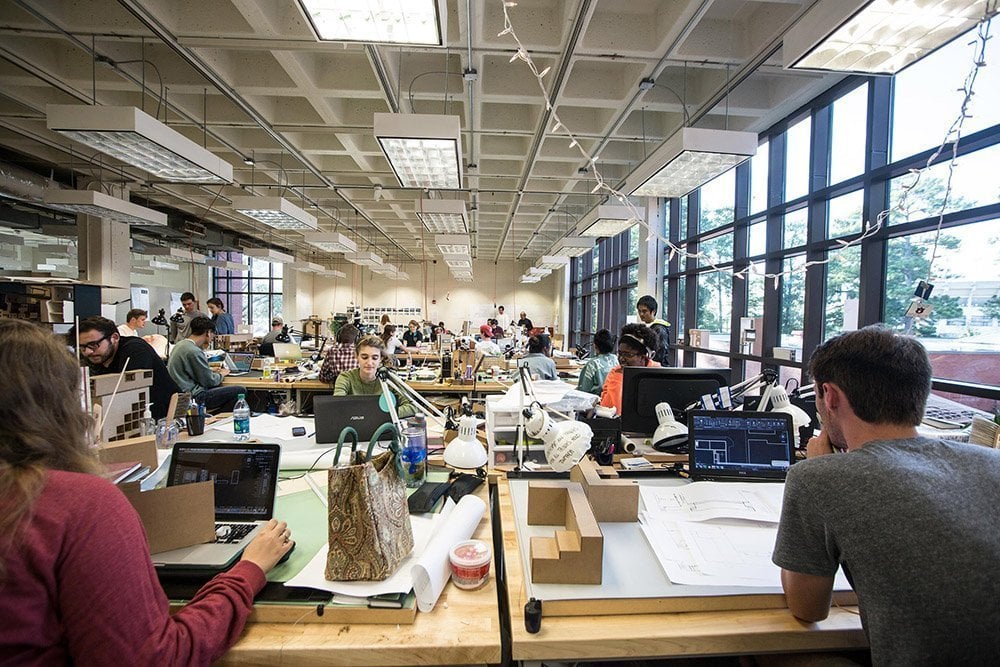There exists a great divide between the baby boomer and millennial generations. The massive distinction between the two age groups can be associated with The Great Recession in the late 2000s, which appears to skip an entire generational category, Gen X. The millennial generation, also known as Generation Y, consists mainly of individuals born between the years of 1980 to 2000.
Millennials blossomed during a period of technological change, globalization, and economic disruption. Their upbringing has led them to adopt a set of behaviors and experiences unique from that of their parents. For example, millennials are known to marry and move out at an older age compared to people from preceding generations. Many millennials also manifest a particular "sharing economy," whereby they develop a specific attitude to ownership.
 Millennials discussing and sharing.
Millennials discussing and sharing.
As the first generation to live alongside the digital world, they also share an affinity with technology that helps shape their lives. They believe in wellness, choosing to devote their time and money towards exercising and eating right. Their active lifestyle can influences trends in areas ranging from food and drink to home design. A new generation of millennial architects will be creating today's housing choices with an open mind and designs inspired by the age of social media, video games, and virtual living.
Eschewing more traditional methods, millennial architects tend to draw their inspiration from what they see on their desktops, phones, and tablets. Architecture industry leaders discern that millennials are set to reinvent the future of architecture with their self-expression and social awareness.
 Millennials and technology
Millennials and technology
While there are undeniable differences between every generation, millennials have overtaken the baby boomers as the world's largest living generation. They are anticipated to make up an estimated 75 percent of the workforce by 2025. Millennials bring about a widely different range of expectations stemming from the way they live, work, and play. Their lifestyles have inarguably impacted the way architects design and organize our cities and communities.
 Millennials at work
Millennials at work
Since this generation grew up in a time where rapid technological, economic, and global changes are taking place, their expectations will undeniably differ from those before them. They are instead digital natives who do not wish to be financially and physically burdened by ownership.
This aspect of millennials has led to the rise of a "sharing economy" in which music, clothes, housing, and even cars are have become shared commodities. In turn, the money saved from employing this concept is used towards areas of experiences and memories such as health, travel, adventure, the arts, and culture, eating out and socializing.
 Traveling around the world
Traveling around the world
To them, experiences deem a far higher value compared to material possessions. So what exactly does this beget for architects? For one, architects need to start building places and experiences instead of merely designing buildings. There lies a need to question the status quo and push pass boundaries despite knowing that failure may be present but be prepared to try again. Architects can no longer build cities and expect them to work.
Instead, they need to curate them since globalization, rapid urbanization, and fast-changing technology are radically altering our way of life. It is imperative to comprehend and design for the human factors associated with these changes. Current principals and firm owners have indeed paid their dues for years by working effectively, diligently, and meticulously towards the art of architecture.
 Jewel Changi, planned as an architecture with a unique visitor experience through the hybrid of a shopping mall and nature park under one roof
Jewel Changi, planned as an architecture with a unique visitor experience through the hybrid of a shopping mall and nature park under one roof
However, these life lessons aren't as easy to pass on. There appears to be an underlying curiosity and suspicion that established baby boomers hold towards new aspiring architects entering the workforce. The disconnect may create some form of resentment between the two generations.
It can come from a place of un-communicated expectations and assumptions that one group has for the other. It can also be chalked up to two varying ways utilized by each group when doing things, which eventually causes a rift in the generational spectrum of core values. In this scenario, how does the profession of architecture evolve from here, or can it even develop in the first place?
 Disagreements among people
Disagreements among people
Fresh architect graduates today are endowed with technological knowledge unrivaled by their predecessors. They have an impressive grasp of technical capabilities ranging from 3D printing to the newest innovations in building science and sustainability. These young architects have been honing their digital skills for the past five years, which provides them with a wealth of knowledge and opportunities.
 Architecture students at the Auburn University College of Architecture, Design, and Construction.
Architecture students at the Auburn University College of Architecture, Design, and Construction.
Rather than looking at each other from two ends of a spectrum, the expertise held by millennial architects can be used to complement the abundant amount of knowledge and experience accumulated by baby boomers. To match the transition from architects of the baby boomer era to the millennials, those in the profession should also strive to move beyond traditional architecture boundaries. To design new and innovative ways that will create fascinating experiences that people value and will eventually come to love.
Working with Millennials is especially crucial because baby boomers are beginning to retire in record numbers. That was only the beginning as millennials aged between 19 to 34 years old already consist of more than one-third of the workforce. They are expected to account for almost 75 percent of the workforce by the year 2025. As a result, architectural firms are now facing fierce competition to entice and retain qualified millennial professionals. Getting to know millennials and providing them with an ideal workplace can do this.
 Young people in the workforce
Young people in the workforce
Millennials want to be paid based on skill sets and faster promotions. They believe that it is a company's job to provide appropriate leadership development and have values that line up with their own. An employee will leave if the business fails to live up to these expectations. Millennials do not want to be stuck doing eight hours of mundane routine work they believe have little social impact.
They want to do meaningful work centered on people. These attributes must then incorporate into critical retention strategies for millennial architects. Tasks should include opportunities for them to work on fulfilling projects that can make a social impact. Such social projects could be like environmental sustainability building, low-income housing solutions, and disaster relief architecture.
 One Central Park, a 5 Green Star awarded architecture, that acts as a village for residents to live and work in
One Central Park, a 5 Green Star awarded architecture, that acts as a village for residents to live and work in
Since millennials are the pioneering generation of digital natives, technology has considerably shaped their expectations. Their need for social connecting speaks to how profoundly ingrained technology is to their daily lives.
As such, they hold the same hope for their working lives. The strategies for attracting and recruiting millennials should thus address their
characteristics. First, there is a need to cultivate a workplace culture that embodies the millennial spirit. It will draw young architects towards the job. Workplace culture should promote inclusiveness and embrace the architectural firm's brand and reputation.
 Inclusiveness at work
Inclusiveness at work
As millennials often turn to social media networks as a source of information, potential employers should regularly monitor and manage the online conversation surrounding the brand. The online discussion alongside marketing strategies should showcase the company's core values for recruits to gauge whether their personal views align with the company's position.
Technology is a huge deal in a millennials life, and it plays a vital role in other respects. Video interviews, rather than in-person meetings, can cement a brand's reputation as a progressive and flexible architecture firm. It also provides distinct advantages for both firm and employee.
 Online company presence and marketing
Online company presence and marketing
Millennials will find video interview to be more convenient as it allows them to express their character instead of what is on the resume. For the architecture firm, video interviewing can cut down on time and money compared with face-to-face interviews. In all, video interviewing reflects a modern workforce that emphasizes the use of technology, flexibility, and a willingness to collaborate for mutual benefit.
Some other recruiting methods include adopting an excellent pay and benefits package that promises career advancement with the chance for upward mobility. Millennials will either refuse a position or only accept it as stepping stone towards employment progression if they view the job as a dead-end. Apart from the digital world, architecture companies should also rethink everything from work schedules to leadership training.
 Agreeing for a job role
Agreeing for a job role
A way of doing this is to allow flexible working for employees by doing away with a nine to five schedule. Also, personal and organizational values can be incorporated such that employees have sufficient time to tend to their own needs like family or community projects.
For many millennials, the professional development also determines whether or not they decide to accept a position. A Deloitte survey has shown that six out of ten millennials do not think that their companies have done enough to bring out their full leadership potential. This characteristic is one of the highest indicators in determining an individual's business value.
 Flexible working hours
Flexible working hours
Skill development encompasses a myriad of activities, including training software, mentoring, and collaborative teamwork. Millennial's desire to support that encourages them to take on leadership roles not only on teams but also over projects and departments.
Attracting, hiring, and retaining millennials can involve a complete revamp of an entire business model. Every aspect of the talent management process has to be rethought of through the millennial lens with the overarching intention of establishing a loyal and innovative workforce.
While there lies a disconnect between the expectations of millennial and baby boomer architects, the gap can be pulled closer together by making these required changes. No one says that it will be an easy feat moving into the future. However, this future is already on the horizon, and adjustments must be made to ensure a smoother transition from the architects of the baby boomers generation to the millennials of the future.










